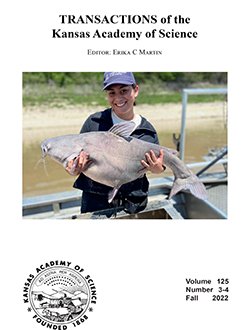In wet environments a portion of ambient inorganic mercury (Hg) is transformed to methylmercury (MeHg); a neurotoxin that readily concentrates in fish. Public health entities monitor Hg levels in fish to inform consumers of the types and amounts of fish that are safe to eat. In this study, monitoring data collected from stream and lakes across Kansas were used to summarize fillet tissue total mercury (THg = MeHg + Hg) levels in 36 fish species and hybrids. Data associated with eleven food fish taxa (genus and species) were presented in detail and statewide risk-based monthly safe consumption limits (SCLs) protective of Hg sensitive individuals were calculated, including two size categories (< or ≥ 508 mm) for larger growing taxa. Linear mixed effects models (LMEMs) were used to generate least squares (LS) mean fish THg values for between habitat (lakes and streams) and within habitat (waterbody size, ecoregion, and major river basin) categorical variables, and for individual sample sites. Sample site LS means were used to identify potential fish THg hotspots among lakes (LS means ≥ 90th percentile) and streams (Getis-Ord Gi* statistic). Across all samples (n = 2,106) a more than 200-fold difference existed between the highest (2.1 mg/kg) and lowest THg (0.01 mg/kg) concentrations, but most samples were below the Kansas Department of Health and Environment's (KDHE) human health screening level (HSL) (0.23 mg/kg). Statewide safe consumption limits ranged from 1 meal/month in ≥ 508 mm flathead catfish to 8 meals/mo. in crappie spp. Least squares mean fish THg was significantly higher in streams than lakes, and significantly higher in small lakes (< 10 surface acres) than larger lakes. Stream size did not affect fish THg levels. In both lakes and streams, ecoregion and major river basin significantly affected fish THg levels with higher levels more prevalent in eastern geographic areas. Lakes identified as potential fish THg hotspots were widely distributed throughout the study area, but all stream hotspot sites were clustered in the southeast portion of the state.
How to translate text using browser tools
3 November 2022
Mercury in Kansas Fish: Levels, Patterns, and Risk-Based Safe Consumption Limits for Mercury Sensitive Individuals
Clint A. Goodrich,
Britini Jacobs,
Brett T. Miller
ACCESS THE FULL ARTICLE
Consumption Advisories
hotspots
methylmercury
Safe Consumption Levels





